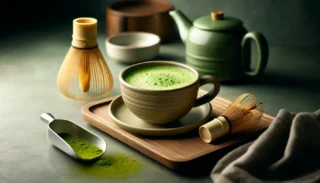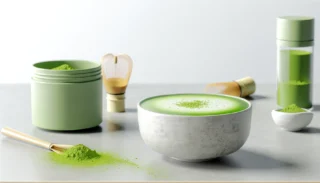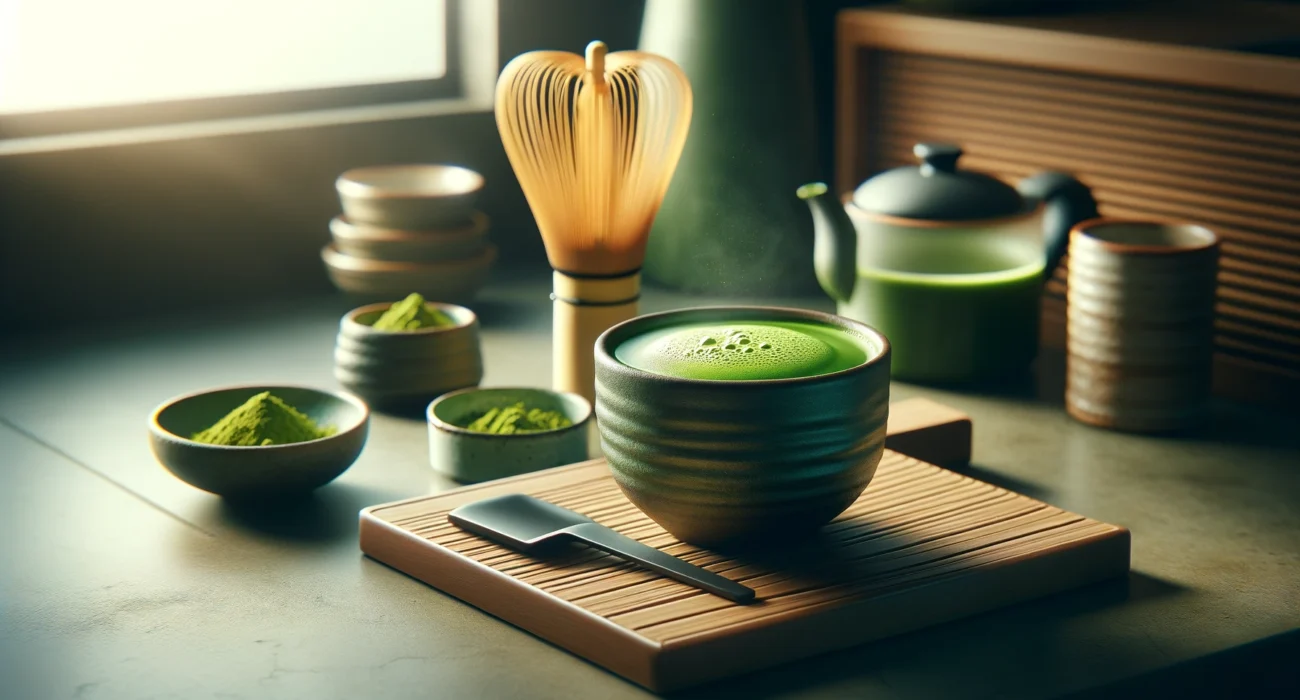Embracing Tranquility: The Art of Matcha Tea Preparation
Matcha tea is a unique type of green tea that originates from Japan. It’s made by taking young tea leaves and grinding them into a bright green powder. Unlike traditional green tea, where the leaves are infused in water and then removed, with matcha, you’re actually drinking the leaves, which have been finely powdered and made into a solution, traditionally by mixing about a teaspoon of matcha powder with a third cup of hot water (heated to less than boiling), then whisking it with a bamboo brush until it froths.

Types of Matcha Tea
There are primarily two types of matcha tea, categorized based on quality:
- Ceremonial Grade: This is the highest quality of matcha used for tea ceremonies and Buddhist temples. It’s made from the youngest tea leaves, with the stems and veins removed. The leaves are stone-ground into a fine powder. Ceremonial grade matcha has a more vibrant green color and a sweeter, more delicate flavor compared to culinary grade. It’s intended to be mixed with hot water and consumed directly.
- Culinary Grade: This type of matcha is used for cooking and baking. It’s made from leaves that are slightly older than those used for ceremonial grade matcha, which makes it less expensive. Culinary grade matcha is still high quality but has a more robust flavor and slightly bitter taste, making it ideal for recipes like smoothies, lattes, and desserts where it’s mixed with other ingredients.
Benefits of Matcha Tea
Matcha tea offers several health benefits, largely due to its high concentration of antioxidants, especially catechins, which are believed to have cancer-fighting effects. Here are some of the key benefits:

- High in Antioxidants: Matcha is rich in catechins, a class of plant compounds in tea that act as natural antioxidants, helping to protect against cell damage and lower the risk of several chronic diseases. Matcha is rich in catechins, a class of plant compounds in tea that act as natural antioxidants. These substances can help stabilize harmful free radicals, which can damage cells and lead to chronic disease.
- Enhances Brain Function: Some studies suggest that matcha can improve brain function, possibly due to its content of caffeine and L-theanine. These substances can enhance memory, attention, and reaction times. Matcha contains a combination of caffeine and L-theanine, which can enhance brain function by improving attention, memory, and reaction time. L-theanine also has calming effects, which can help reduce stress levels.
- Promotes Heart Health: Drinking matcha may help reduce levels of bad LDL cholesterol and triglycerides, as well as help prevent the oxidation of LDL cholesterol, which is another risk factor for heart disease. Consuming matcha may help protect the heart by reducing levels of bad LDL cholesterol and triglycerides, as well as by increasing the level of good HDL cholesterol.
- Helps with Weight Loss: Matcha has been shown to increase metabolism and fat burning, both of which can aid in weight loss. Matcha has been shown to enhance weight loss by boosting metabolism and increasing fat burning, both during exercise and at rest.
- Detoxifies the Body: The vibrant green color of matcha comes from its high chlorophyll content, which is a powerful detoxifier. Chlorophyll can help eliminate both chemicals and heavy metals from the body. Some studies suggest that matcha can help protect the liver, improving liver function and reducing the risk of liver disease.
- Improves Skin Health: The antioxidants in matcha may help protect the skin from the harmful effects of UV rays, reduce inflammation, and improve overall skin health.
Remember, while matcha is a healthy beverage with numerous benefits, it’s best to consume it in moderation as part of a balanced diet. Too much caffeine, for example, can lead to side effects like insomnia, irritability, nausea, or stomach upset.
How to make Matcha tea
Ingredients
- 1 to 2 teaspoons of matcha powder (depending on how strong you like it)
- 2 ounces (60 ml) of hot water (just under boiling, around 175°F or 80°C)
- Optional: sweetener of choice
Equipment
- Tea bowl (or a small, deep bowl)
- Bamboo whisk (Chasen) or a small regular whisk
- Matcha tea sifter (optional but recommended for clump-free tea)
Instructions
- Sift the Matcha: Place your matcha powder into the sifter and sift it into your tea bowl. This step is crucial for removing any clumps, ensuring a smooth tea.
- Add Hot Water: Pour about 2 ounces of hot water into the bowl with the matcha powder. It’s important that the water is not boiling, as too high of a temperature can make the matcha taste bitter.
- Whisk Vigorously: Using the bamboo whisk, whisk the matcha and water together briskly in a W or M motion until the tea becomes frothy. If you don’t have a bamboo whisk, a small regular whisk can work, but the bamboo whisk is designed to create the optimal froth and texture.
- Adjust to Taste: Taste the matcha tea and, if desired, add a bit of your preferred sweetener, whisking gently to combine.
- Serve Immediately: Enjoy your matcha tea right away while it’s warm and frothy.
It’s important to note that while matcha is a healthy component of the diet for most people, it’s high in caffeine. Those sensitive to caffeine should consume it in moderation. Also, because of its concentrated nature, it’s possible to consume more lead (which tea plants can absorb from the environment) than you would from drinking regular green tea, although the levels are generally considered safe if you’re not consuming excessive amounts.

